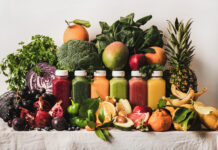
Overall, consumers trust information from brands, but they still want greater transparency, especially when it comes to food safety. This is the take-home message from the latest survey by global certification body DNV-GL.
The survey asked 4,500 consumers around the globe — mostly Europe and Asia — about their level of trust in food brands, particularly as it relates to food safety. They found that 85% “take food safety for granted” when buying branded packaged products, while non-packaged products (80%) and packaged unbranded products (69%) were trusted slightly less. More than half (55%) of respondents said they would welcome more information and transparency about food safety issues.
Joy Franks-Laing, DNV-GL’s global food and beverage manager, commented in a press release: “Food safety is still top of the agenda for consumers. However, the survey results seem to indicate that while food & beverage manufacturers and retailers may have invested considerably in protecting consumers, they are not 100% convinced that all products are safe to consume.”
The survey also asked consumers if they wanted more information about health issues, environmental issues, social issues, and other sustainability issues. They do, but all three of these categories were less important than food safety.
Overall, Americans seem less interested in all of the issues than do respondents from other parts of the world. When interpreting the data below, be aware that the sample size from the United States was comparatively small — there were only 300 U.S. respondents, compared with 2,100 from Europe and 1,800 from Asia.
Health issues
Just over one-half (53%) of respondents would welcome more transparency about health issues. The data below reflect the findings when respondents were asked specifically about health issues.
Consumers would welcome more transparency about:
- Product content clearly indicated: 65.2% (US: 59.8%)
- Food safety secured from farm to fork: 62.8% (US: 59.7%)
- Proper hygiene to prevent contamination: 58.8% (US: 57.7%)
- Allergens and potentially dangerous ingredients clearly indicated: 57.6% (US: 51.8%)
- GMO ingredients: 49.9% (US: 42.4%)
- Suitability for infants and children: 38.3% (US: 32.7%)
Environmental issues
Globally, 38% of respondents indicated interest in more transparency around environmental issues. The data below reflect the findings when respondents were asked specifically about environmental issues.
Consumers would welcome more transparency about:
- Sustainable packaging to reduce plastic and other waste: 67.8% (US: 55.7%)
- Use of organic ingredients, whose production reduces pesticides: 57.6% (US: 49.9%)
- Reduced greenhouse gas emissions during production: 50.6% (US: 44.3%)
- Restoration of natural habitats and protection of biodiversity: 49.6% (US: 44.8%)
- Reduced water consumption: 40.9% (US: 39.8%)
Social issues
Just 35% of respondents indicated they’d like more information about social issues. The data below reflect the findings when respondents were asked specifically about social issues.
Consumers would welcome more transparency about:
- Reducing food waste: 61.3% (US: 48.5%)
- Healthy working conditions in fields and factories: 56.3% (US: 55.1%)
- Human rights: 55.5% (US: 54.7%)
- Worker empowerment and local community development: 38.3% (US: 35.9%)
- Corporate social responsibility initiatives: 36.1% (US: 34.5%)
Other sustainability issues
Consumers would also welcome more transparency about the following sustainability issues:
- Origin of the product/ingredients: 63.7% (US: 53.9%)
- Respect for animal welfare: 52.5% (US: 49.5%)
- Total carbon footprint specified: 43.9% (US: 39.2%)
- Vegan or animal-based ingredients clearly specified: 39.3% (US: 35.9%)
- Indication of traditional crops or processing techniques used: 37.4% (US: 34.9%)
- Clear cultural or religious specifications: 26.6% (US: 28.2%)
Finally, roughly two-thirds (68%) of respondents would pay more for a product if the information about the above issues was verified by an independent party, and 69% would pay more for products certified to a recognized quality or food safety standard.
Visit the DNV-GL for more results, including demographic breakdowns.









